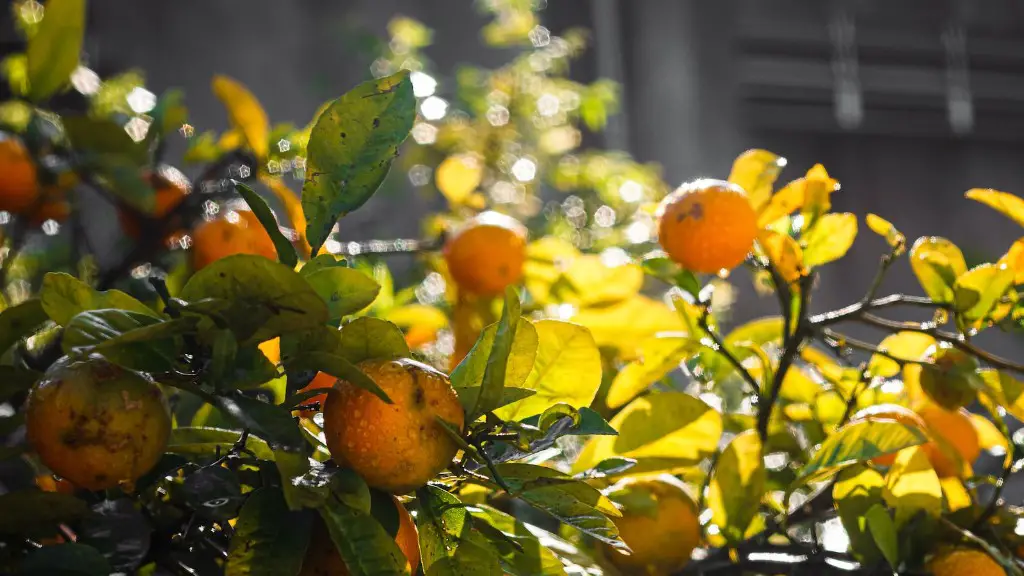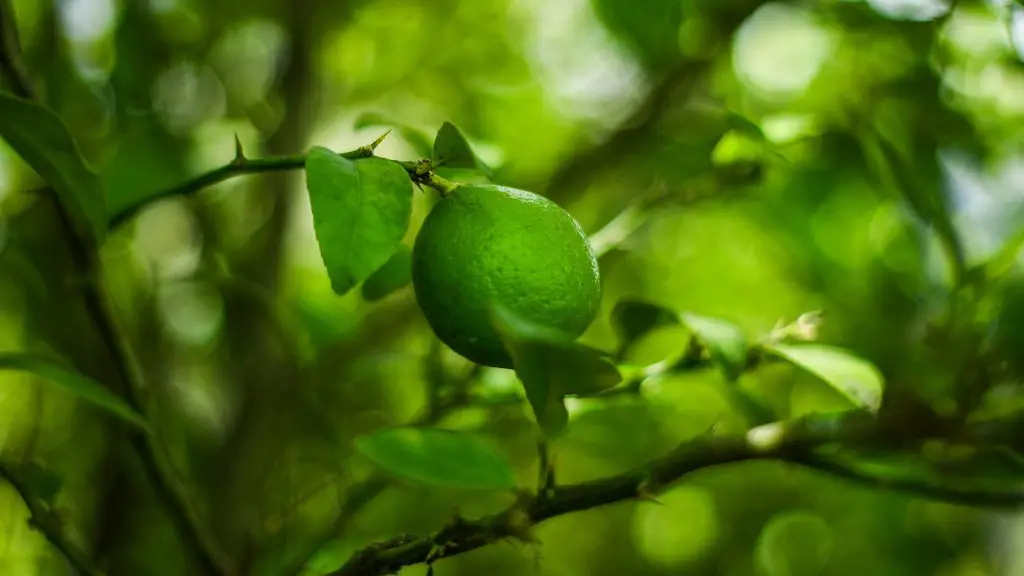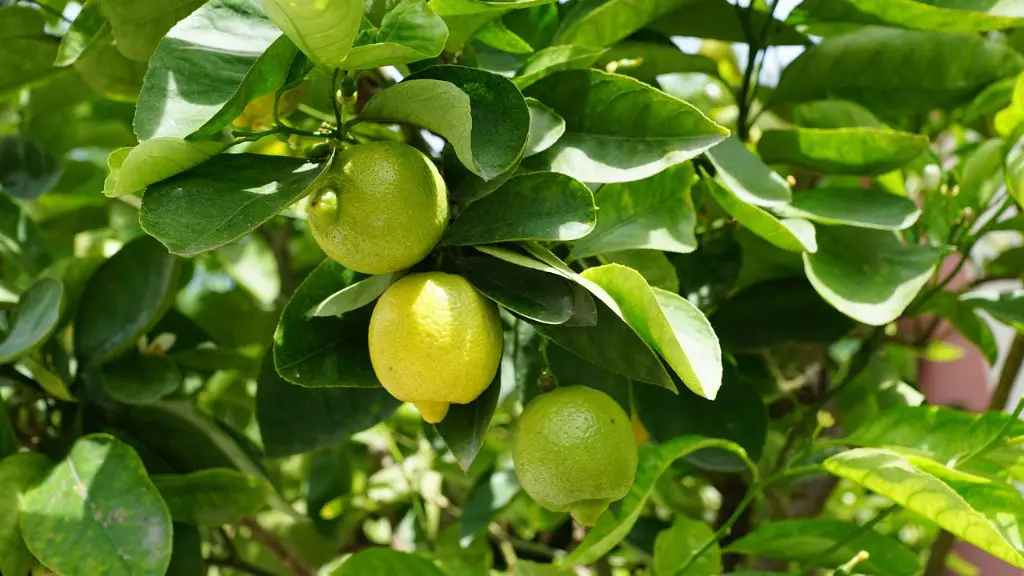Lemons are a popular fruit around the world and have a variety of uses in cooking, beverages, and medicine. So, many people want to know how long before a lemon tree fruits. The answer to this question depends on many factors, such as the tree’s size, environment, and care.
Generally, a lemon tree will take between three and five years to start producing lemons. The younger a tree is, the faster it will bear fruit. For citrus trees, however, two to three years is the expected time of fruiting.
Certain varieties of lemon trees will bear fruit earlier than others. Dwarf lemon trees, for instance, are typically smaller and produce fruit earlier than other varieties. Lemons from these trees are known to start making an appearance after only two years.
Temperature and climate also influence the lemon tree’s growth rate. Trees that are grown in tropical and subtropical climates tend to grow faster and produce fruit earlier. Trees grown in cooler climates can take a bit longer to bear fruit.
Furthermore, maintaining the tree well is critical for it to bear fruit in a timely manner. Trees grown in soil that’s too dry or has poor nutrients will have trouble fruiting. Trees also need consistent watering and pruning to bear fruit.
In conclusion, the amount of time it takes for a lemon tree to bear fruit can vary from three to five years. Factors such as a tree’s size, environment, and care affect the growth and fruiting process.
Care of Lemon Trees
The right amount of care is essential for lemon trees to bear fruit. This requires proper watering, pruning, and fertilization. Many lemon trees are in containers, making watering and fertilization easier to manage.
When it comes to the quantity and timing of watering, the most important rule is to make sure the soil is consistently moist. During the summer months, trees need more frequent watering. If in a pot, water until it drains from the bottom. If a tree is in the garden, it should receive about three-quarters of an inch of water every week.
Pruning is essential to encourage growth as well as maintain a tree’s shape and size. Pruning should take place during the winter months. It is important to remove any dead or damaged branches. Doing this will improve the quality of the lemons and encourage new growth.
When it comes to fertilization, it is best to feed the tree three to four times throughout the year. A balanced fertilizer with a nitrogen-phosphorus-potassium ratio of 8-8-8 is best. As an alternative, organic fertilizers like alfalfa or fish emulsion can work as well.
Lastly, mulching helps to slow down water evaporation and keeps the tree’s roots at a consistent temperature. It also reduces the chances of weeds in the garden. Mulch should be applied in an even layer, about 2 inches (5 cm) thick.
Harvesting and Storing Lemons
Once a lemon tree is happily producing fruit, you’ll want to know when is the best time to harvest it. To pick a ripe lemon, hold it in your hand and press the end. If the lemon is ripe, it will give a bit easily when you press it. Orange or yellow lemons, as opposed to green, are typically the riper ones.
If you want to store lemons, choose ones with unblemished skin. Then place them in a container and store them in the refrigerator. Properly stored lemons will last up to two weeks. To keep the flavor and scent of lemons, you can also freeze them. Frozen lemon halves can last up to six months in the freezer.
It is not advisable to store lemons at room temperature or in direct sunlight. Doing either will only encourage the breeding of bacteria and cause the lemons to spoil.
Once you’ve harvested the fruit, you’ll want to make sure it gets used. Lemons are great for adding flavor to a variety of drinks and dishes. They can also be used for cleaning and deodorizing surfaces. To extract the most juice from a lemon, roll it on the countertop a few times before squeezing it.
Lemon Tree Pests and Diseases
Though lemon trees are not overly prone to diseases and pests, there are a few that can cause problems. Some of these include citricola and mites, which can cause damage to leaves and fruit. Common garden pests, like aphids, can also cause harm to the leaves.
It is essential to regularly inspect your lemon tree for signs of disease and pests. Doing so can prevent problems from getting worse. If your tree has an infestation, you can treat it with an insecticide or fungicide. If the problem persists, you may want to consider seeking advice from a professional.
Fungal diseases, like root rot, can also damage lemon trees. Root rot is caused by fungi, like pythium, that attack a tree’s roots. The best way to prevent root rot is to make sure the soil is not soggy and water the tree correctly. If your tree is infected with root rot, you should consider treating it with an appropriate fungicide.
In addition, you can also protect your tree from diseases and pests by spraying it with an insecticidal soap. Insecticidal soaps can be used to get rid of mealybugs and aphids. Before applying the soap, make sure to read the instructions on the label to ensure it is suitable for use on citrus trees.
Unkown Facts About Lemon Trees
Lemon trees are not only practical but they’re also interesting to know more about. Did you know that the lemon tree originated in the Indus Valley in India? Over time, the tree spread to the Mediterranean where it was widely used in cooking and medicine.
Another fun fact is that if you keep a lemon tree in a pot, you can move it around your house. This will help to ensure it gets the best levels of sunlight and avoiding extreme temperatures. Lemon trees need plenty of sun to grow but can also tolerate partial shade.
Yet another interesting fact is that lemons are cold-sensitive. If you live in a cold climate, it is important to protect the tree during winter months. Potted lemon trees should be stored in a place where temperatures remain above 20°F (-7°C).
Finally, when it comes to harvesting, the amount of lemons a tree can produce varies depending on the species. A tree can produce between 200 and 1,000 lemons per year. Dwarf trees usually produce fewer lemons than their regular-sized counterparts.
Tips for Growing a Lemon Tree
If you’re considering growing a lemon tree, here are some tips to keep in mind. Firstly, choose a location that will get plenty of sunlight. In most cases, eight hours of direct sunlight is best for a lemon tree.
Secondly, lemon trees prefer soil that is well-draining and slightly acidic. You can achieve this with a combination of sandy loam and compost. If in doubt, you can also send a sample of your soil to a lab to check the ph level.
It’s also important that your lemon tree receives the right amount of water and fertilizer. As mentioned before, the soil should be consistently moist but not soggy. Additionally, fertilize your lemon tree twice a year with a citrus fertilizer.
Finally, make sure your tree is regularly inspected for signs of pests and diseases. If there’s an infestation, treat your tree with an insecticide or fungicide. Additionally, pruning your lemon tree in the winter will help to maintain it’s shape and produce fruit.





